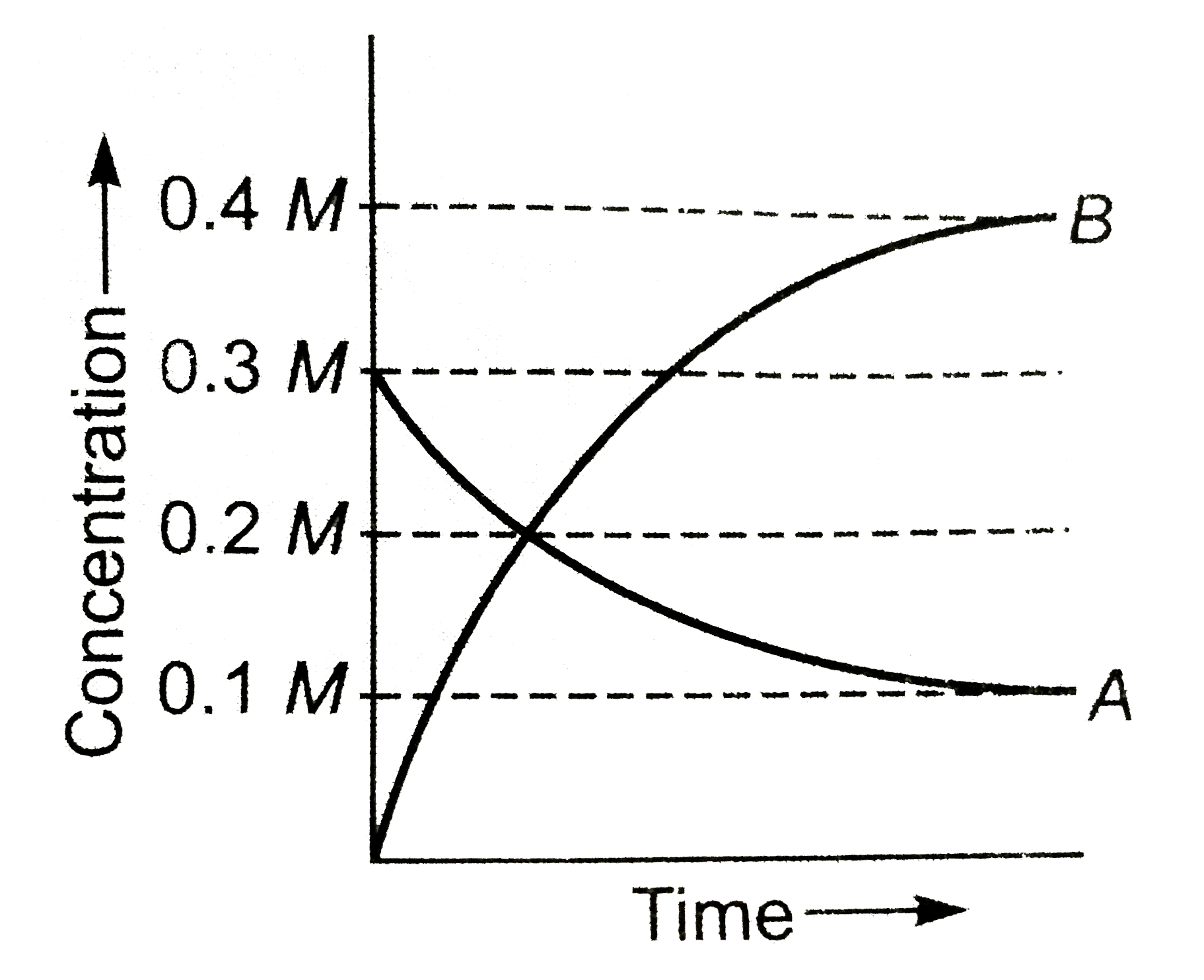A(G)+B(g)⇔C(g)+D(g)
Above equilibrium is established by taking A& B in a closed container. Initial concentration of A is twice of the initial concentration of B. At equilibrium concentraons of B and C are equal. Then find the equilibrium constant for the reaction, C(g)+D(g)⇔A(g)+B(g).
The correct Answer is:3
Topper's Solved these Questions
- CHEMICAL EQUILIBRIUMBook:RESONANCEChapter:CHEMICAL EQUILIBRIUMExercise:Exercise-2 (Part-3)
Explore 34 Videos
- CHEMICAL EQUILIBRIUMBook:RESONANCEChapter:CHEMICAL EQUILIBRIUMExercise:Exercise-2 (Part-4)
Explore 6 Videos
- CHEMICAL EQUILIBRIUMBook:RESONANCEChapter:CHEMICAL EQUILIBRIUMExercise:Exercise-2 (Part-1)
Explore 28 Videos
- CHEMICAL BONDINGBook:RESONANCEChapter:CHEMICAL BONDINGExercise:Inorganic chemistry (Chemistry Bonding)
Explore 49 Videos
- D & F-BLOCK ELEMENTS & THEIR IMPORTANT COMPOUNDS Book:RESONANCEChapter:D & F-BLOCK ELEMENTS & THEIR IMPORTANT COMPOUNDS Exercise:Match the column
Explore 1 Video
Similar Questions
A(g)+3B(g)→4C(g)Initially concentration of A is equal to that of B. The equilibrium concentrations of A and C are equal. Kc is :
View SolutionFor the reaction A+B⇔C+D, the initial concentrations of A and B are equal. The equilibrium concentration of C is two times the equilibrium concentration of A. The value of equilibrium constant is ………..
View Solution
Knowledge Check
A(g)+3B(g)→4C(g)Initially concentration of A is equal to that of B. The equilibrium concentrations of A and C are equal. Kc is :
A0.08B8C80D1/8For the reaction a+b<⇒c+d, initially concentrations of a and b are equal and at equilibrium the concentration of d will be twice of that of a. What will be the equilibrium constant for the reaction?
A2B9C4D3A+B⇔C+D . If initially the concentration of A and B are both equal but at equilibrium , concentration of D will twice of that of A , then what will be the equilibrium constant of the reaction ?
A49B94C19D4
The figure shows the change in concentration of species A and B as a function of time.
The equilibrium constant Kcfor the reactionA(g)⇔2B(g) is :

View SolutionThe following equilibrium exists in a closed vessel in 1L capacity A(g)+3B(g)⇔4C(g)
initial cocentration of A(g) is equal to that B(g). The equilibrium concentration of A(g) and C(g) are equal. Kc for the reaction is
View SolutionThe following equilibrium exists in a closed vessel in 1L capacity A(g)+3B(g)⇔4C(g)
initial cocentration of A(g) is equal to that B(g). The equilibrium concentration of A(g) and C(g) are equal. Kc for the reaction is
View SolutionA+B⇔C+D. If finally the concentrations of A and B are both equal but at equilibrium concentration of D will be twice of that of A then what will be the equilibrium constant of reaction.
View SolutionThe figure shows the change in concentration of species A and B as a function of time.
The equilibrium constant Kcfor the reactionA(g)⇔2B(g) is :

View Solution

